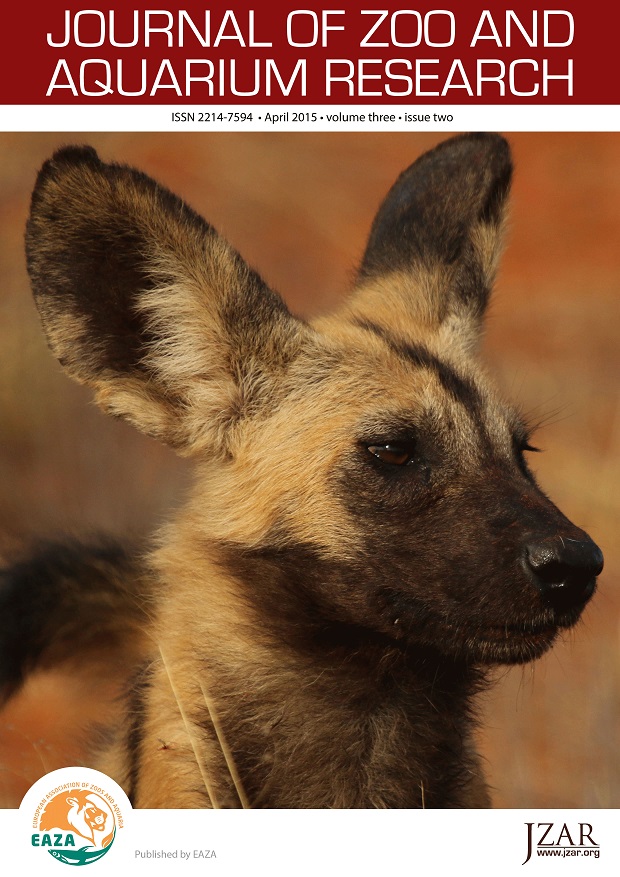Comparative Evaluation of Wheat-roti or Rice-lentil Mixture as Supplements for Growing Asiatic Elephants (Elephas maximus)
DOI:
https://doi.org/10.19227/jzar.v3i2.30Abstract
The feeding of supplements that supply all nutrients in optimum amounts to support normal growth is of paramount importance when feeding growing elephants in captivity. This experiment evaluated wheat roti (WR) and a rice–lentil mixture (RLM) as supplements for growing semi-captive Asian elephants. Six sub-adult (7–12 years; 1327–3288 kg) elephants were split into two groups of three each. The study period was divided into two, and each group received both supplements in a switch-over design. Elephants in treatment I and II received concentrate supplements consisting of WR and RLM respectively. They were allowed to forage in the nearby forests from 0530 to 1730. Cut grasses (narkul, Arundo donox) were offered ad lib (20% excess of previous day’s intake) to each animal from 1730 to 0530 when they were in their enclosures. As animals were in enclosures during the night, faeces of each individual elephant could be collected separately, and elephants had no access to one another’s feeds. Faeces voided during foraging were collected in full, representative samples of forages consumed were taken and intake during foraging was measured indirectly using lignin as a marker. Intake of cut grasses and forages were similar between the treatments. Apparent digestibility of CP was higher (P<0.05) in treatment II. Apparent digestibility of other nutrients was comparable in both the treatments. Intake of zinc was higher in treatment II. Intake, excretion and absorption of Ca, Co, and Cu did not differ between the treatments. Absorption of P and Fe was higher (P<0.05) in treatment II. Blood metabolites, serum enzymes activities and concentration of serum minerals were similar among the treatments. The relative population of total bacteria was numerically increased in treatment II. The results of this experiment demonstrate that RLM may be better supplement for growing elephants than WR.
Downloads
Published
How to Cite
Issue
Section
License
JZAR fulfils the DOAJ definition of open access and provides free and open access to the full text of all content without delay under a Creative Commons licence. The copyright holder of JZAR publications grants usage rights to third parties, allowing for immediate free access to the work and permitting any user to read, download, copy, distribute, print, search, or link to the full texts of articles.







